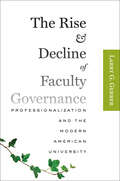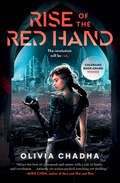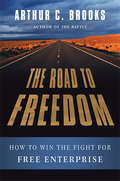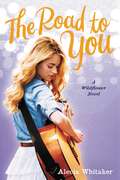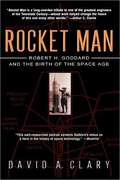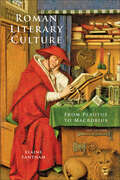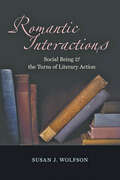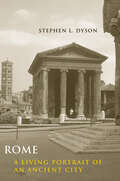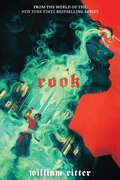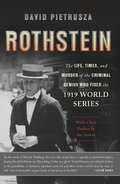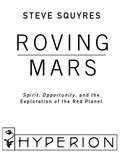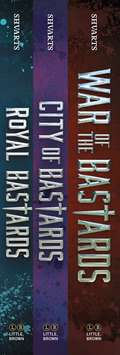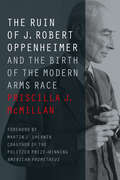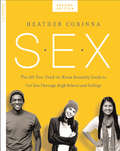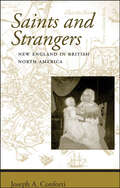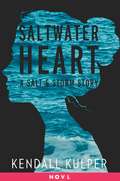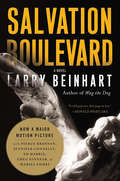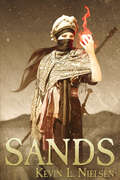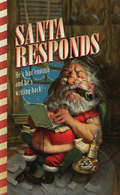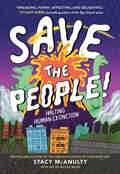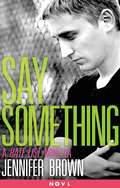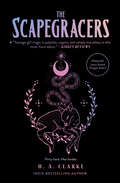- Table View
- List View
The Rise and Decline of Faculty Governance: Professionalization and the Modern American University
by Larry G. GerberThe Rise and Decline of Faculty Governance is the first history of shared governance in American higher education. Drawing on archival materials and extensive published sources, Larry G. Gerber shows how the professionalization of college teachers coincided with the rise of the modern university in the late nineteenth century and was the principal justification for granting teachers power in making educational decisions. In the twentieth century, the efforts of these governing faculties were directly responsible for molding American higher education into the finest academic system in the world. In recent decades, however, the growing complexity of "multiversities" and the application of business strategies to manage these institutions threatened the concept of faculty governance. Faculty shifted from being autonomous professionals to being "employees." The casualization of the academic labor market, Gerber argues, threatens to erode the quality of universities. As more faculty become contingent employees, rather than tenured career professionals enjoying both job security and intellectual autonomy, universities become factories in the knowledge economy. In addition to tracing the evolution of faculty decision making, this historical narrative provides readers with an important perspective on contemporary debates about the best way to manage America’s colleges and universities. Gerber also reflects on whether American colleges and universities will be able to retain their position of global preeminence in an increasingly market-driven environment, given that the system of governance that helped make their success possible has been fundamentally altered.
The Rise and Decline of Faculty Governance: Professionalization and the Modern American University
by Larry G. GerberThe Rise and Decline of Faculty Governance is the first history of shared governance in American higher education. Drawing on archival materials and extensive published sources, Larry G. Gerber shows how the professionalization of college teachers coincided with the rise of the modern university in the late nineteenth century and was the principal justification for granting teachers power in making educational decisions. In the twentieth century, the efforts of these governing faculties were directly responsible for molding American higher education into the finest academic system in the world. In recent decades, however, the growing complexity of "multiversities" and the application of business strategies to manage these institutions threatened the concept of faculty governance. Faculty shifted from being autonomous professionals to being "employees." The casualization of the academic labor market, Gerber argues, threatens to erode the quality of universities. As more faculty become contingent employees, rather than tenured career professionals enjoying both job security and intellectual autonomy, universities become factories in the knowledge economy. In addition to tracing the evolution of faculty decision making, this historical narrative provides readers with an important perspective on contemporary debates about the best way to manage America’s colleges and universities. Gerber also reflects on whether American colleges and universities will be able to retain their position of global preeminence in an increasingly market-driven environment, given that the system of governance that helped make their success possible has been fundamentally altered.
Rise of the Red Hand (The\mechanists Ser. #1)
by Olivia ChadhaA rare, searing portrayal of the future of climate change in South Asia. A streetrat turned revolutionary and the disillusioned hacker son of a politician try to take down a ruthlessly technocratic government that sacrifices its poorest citizens to build its utopia.
Risk Management for Enterprises and Individuals
by Etti Baranoff Patrick Lee Brockett Yehuda KahaneThis book is intended for the Risk Management and Insurance course where Risk Management is emphasized. When we think of large risks, we often think in terms of natural hazards such as hurricanes, earthquakes or tornados. Perhaps man-made disasters come to mind such as the terrorist attacks in the U.S. on September 11, 2001. Typically we have overlooked financial crises, such as the credit crisis of 2008. However, these types of man-made disasters have the potential to devastate the global marketplace. Losses in multiple trillions of dollars and in much human suffering and insecurity are already being totaled, and the global financial markets are collapsing as never before seen. We can attribute the 2008 collapse to financially risky behavior of a magnitude never before experienced. The 2008 U.S. credit markets were a financial house of cards. A basic lack of risk management (and regulators' inattention or inability to control these overt failures) lay at the heart of the global credit crisis. This crisis started with lack of improperly underwritten mortgages and excessive debt. Companies depend on loans and lines of credit to conduct their routine business. If such credit lines dry up, production slows down and brings the global economy to the brink of deep recession or even depression. The snowballing effect of this failure to manage the risk associated with providing mortgage loans to unqualified home buyers have been profound, indeed. When the mortgages failed because of greater risk- taking on the Street, the entire house of cards collapsed. Probably no other risk-related event has had, and will continue to have, as profound an impact world wide as this risk management failure. How was risk in this situation so badly managed? What could firms and individuals have done to protect themselves? How can government measure such risks (beforehand) to regulate and control them? These and other questions come to mind when we contemplate the consequences of this risk management fiasco. Standard risk management practice would have identified sub-prime mortgages and their bundling into mortgage-backed-securities as high risk. People would have avoided these investments or would have put enough money into reserve to be able to withstand defaults. This did not happen. Accordingly, this book may represent one of the most critical topics of study that the student of the 21st century could ever undertake. Risk management will be a major focal point of business and societal decision making in the 21st century. A separate focused field of study, it draws on core knowledge bases from law, engineering, finance, economics, medicine, psychology, accounting, mathematics, statistics and other fields to create a holistic decision-making framework that is sustainable and value- enhancing. This is the subject of this book.
The Road to Freedom: How to Win the Fight for Free Enterprise
by Arthur C. BrooksEntrepreneurship, personal responsibility, and upward mobility: These traditions are at the heart of the free enterprise system, and have long been central to America&’s exceptional culture. In recent years, however, policymakers have dramatically weakened these traditions—by exploding the size of government, propping up their corporate cronies, and trying to reorient our system from rewarding merit to redistributing wealth. In The Road to Freedom, American Enterprise Institute President Arthur C. Brooks shows that this trend cannot be reversed through materialistic appeals about the economic efficiency of capitalism. Rather, free enterprise requires a moral defense rooted in the ideals of earned success, equality of opportunity, charity, and basic fairness. Brooks builds this defense and demonstrates how it is central to understanding the major policy issues facing America today.The future of the free enterprise system has become a central issue in our national debate, and Brooks offers a practical manual for defending it over the coming years. Both a moral manifesto and a prescription for concrete policy changes, The Road to Freedom will help Americans in all walks of life translate the philosophy of free enterprise into action, to restore both our nation&’s greatness and our own well-being in the process.
The Road to You (Wildflower #2)
by Alecia WhitakerBright lights...screaming fans...cute roadies...country music sensation Bird Barrett has officially arrived.Next up on the road to stardom, Bird's heading out on tour. Between opening for one of the biggest acts in country music and meeting a passionate young photographer who's working as part of the backstage crew, the weeks pass by in an exciting blur. It might even be enough to distract Bird from the way things ended--or never quite started--with Adam Dean.When the tour wraps, though, it's back to reality. The label is eager for a new hit song, but the sudden fame, complete with a media-fueled rivalry with another country music starlet, has Bird questioning her priorities. Before she can pour her heart into her music, she'll need to figure out where it truly lies. Filled with sweet country music spirit, Wildflower is a series you just can't get out of your head.
Rocket Man: Robert H. Goddard and the Birth of the Space Age
by David A. ClaryMore famous in his day than Einstein or Edison, the troubled, solitary genius Robert H. Goddard (1882-1945) was the American father of rocketry and space flight, launching the world's first liquid-fuel rockets and the first powered vehicles to break the sound barrier. Supported by Charles Lindbergh and Harry Guggenheim, through fiery, often explosive, experiments at Roswell, New Mexico, he invented the methods that carried men to the moon. Today, no rocket or jet plane can fly without using his inventions. Yet he is the "forgotten man" of the space age. His own government ignored his rocketry until the Germans demonstrated its principles in the V-2 missiles of World War II. The American government usurped his 214 patents, while suppressing his contributions in the name of national security, until it was forced to pay one million dollars for patent infringement. Goddard became famous again, monuments and medals raining upon his memory. But his renewed fame soon faded, and Goddard's pivotal role in launching the Space Age has been largely forgotten.
Roman Literary Culture: From Plautus to Macrobius (Ancient Society and History)
by Elaine FanthamScholars of ancient literature have often focused on the works and lives of major authors rather than on such questions as how these works were produced and who read them. In Roman Literary Culture, Elaine Fantham fills that void by examining the changing social and historical context of literary production in ancient Rome and its empire. Fantham’s first edition discussed the habits of Roman readers and developments in their means of access to literature, from booksellers and copyists to pirated publications and libraries. She examines the issues of patronage and the utility of literature and shows how the constraints of the physical object itself—the ancient "book"—influenced the practice of both reading and writing. She also explores the ways in which ancient criticism and critical attitudes reflected cultural assumptions of the time.In this second edition, Fantham expands the scope of her study. In the new first chapter, she examines the beginning of Roman literature—more than a century before the critical studies of Cicero and Varro. She discusses broader entertainment culture, which consisted of live performances of comedy and tragedy as well as oral presentations of the epic. A new final chapter looks at Pagan and Christian literature from the third to fifth centuries, showing how this period in Roman literature reflected its foundations in the literary culture of the late republic and Augustan age. This edition also includes a new preface and an updated bibliography.
Romantic Interactions: Social Being and the Turns of Literary Action
by Susan J. WolfsonIn Romantic Interactions, Susan J. Wolfson examines how interaction with other authors—whether on the bookshelf, in the embodied company of someone else writing, or in relation to literary celebrity—shaped the work of some of the best-known (and less well-known) writers in the English language. Working across the arc of Long Romanticism, from the 1780s to the 1840s, this lively study involves writing by women and men, in poetry and prose. Combining careful readings with sophisticated literary, historical, and cultural criticism, Wolfson reveals how various writers came to define themselves as "author." The story unfolds not only in deft textual analyses but also by provocatively placing writers in dialogue with what they were reading, with one another, and with the community of readers (and writers) their writings helped bring into being: Mary Wollstonecraft and Charlotte Smith in the Revolution-roiled 1790s; William Wordsworth and Dorothy Wordsworth in the society of the Lake District; Lord Byron, a magnet for writers everywhere, inspired, troubled, but always arrested by what he (and his scandal-ridden celebrity) represented. This fresh, informative account of key writers, important texts, and complex cultural currents promises keen interest for students and scholars, literary critics, and cultural historians.
Rome: A Living Portrait of an Ancient City (Ancient Society and History)
by Stephen L. DysonStephen L. Dyson has spent a lifetime studying and teaching the history of ancient Rome. That unparalleled knowledge is reflected in his magisterial overview of the Eternal City.Rather than look only at the physical development of the city—its buildings, monuments, and urban spaces—Dyson also explores its social, economic, and cultural histories. This unique approach situates Rome against a background of comparative urban history and theory, allowing Dyson to examine the dynamic society that once thrived there. In his personal effort to reconstruct the city, Dyson populates its streets with the hurried politicians, hawking vendors, and animated students that once lived, worked, and studied there, bringing the ancient city to life for a new generation of students and tourists. Dyson follows Rome as it developed between the third century BC and the fourth century AD, dividing the great megalopolis into distinct neighborhoods and locales. He shows how these communities, each with its own unique customs and colorful inhabitants, eventually grew into the great imperial capital of the Italian Empire. Dyson integrates the full range of sources available—literary, artistic, epigraphic, and archaeological—to create a comprehensive history of the monumental city. In doing so, he offers a dramatic picture of a complex and changing urban center that, despite its flaws, flourished for centuries.
Rook
by William RitterThis standalone adventure set in the world of the New York Times bestselling Jackaby series brims with humor, heart, and—of course—a hefty dose of supernatural mayhem. Abigail Rook never intended to be the mortal bridge between the human and supernatural world. But now, the power of the Sight--and all the chaos that comes with seeing the essential truth of everything, every human, fairy, werewolf, enchanted slip of paper, and municipal building, at all times--is hers alone. With this overwhelming new gift, she should be able to solve crimes and help New Fiddleham, New England find calm in its supernatural chaos. The only problem? She has no idea what she&’s doing. And New Fiddleham isn't waiting for Abigail to be ready. Local witches and other magical beings are going missing, as tensions between human and supernatural residents curdle into a hatred that could tear the city apart. Abigail's fiance, Charlie, works alongside her to unravel the magical disappearances, but as a shapeshifter, he's under threat as well. Then Abigail's parents appear, ready to take her back to England and marry her off to someone she's never met. Abigail has no choice but to follow her Sight, her instincts, and any clues she can find to track a culprit who is trying destroy everything she holds dear.
Rothstein: The Life, Times, and Murder of the Criminal Genius Who Fixed the 1919 World Series
by David PietruszaHistory remembers Arnold Rothstein as the man who fixed the 1919 World Series, an underworld genius. The real-life model for The Great Gatsby's Meyer Wolfsheim and Nathan Detroit from Guys and Dolls, Rothstein was much more-and less-than a fixer of baseball games. He was everything that made 1920s Manhattan roar. Featuring Jazz Age Broadway with its thugs, speakeasies, showgirls, political movers and shakers, and stars of the Golden Age of Sports, this is a biography of the man who dominated an age. Arnold Rothstein was a loan shark, pool shark, bookmaker, thief, fence of stolen property, political fixer, Wall Street swindler, labor racketeer, rumrunner, and mastermind of the modern drug trade. Among his monikers were "The Big Bankroll," "The Brain," and "The Man Uptown." This vivid account of Rothstein's life is also the story of con artists, crooked cops, politicians, gang lords, newsmen, speakeasy owners, gamblers and the like. Finally unraveling the mystery of Rothstein's November 1928 murder in a Times Square hotel room, David Pietrusza has cemented The Big Bankroll's place among the most influential and fascinating legendary American criminals. 16 pages of black-and-white photographs are featured.
Roving Mars: Spirit, Opportunity, and the Exploration of the Red Planet
by Steven SquyresSteve Squyres is the face and voice of NASA's Mars Exploration Rover mission. Squyres dreamed up the mission in 1987, saw it through from conception in 1995 to a successful landing in 2004, and serves as the principal scientist of its $400 million payload. He has gained a rare inside look at what it took for rovers Spirit and Opportunity to land on the red planet in January 2004--and knows firsthand their findings.
Royal Bastards Series Collection (Royal Bastards)
by Andrew ShvartsJoin an epic, action-packed magical adventure, full of conspiracies and danger, in the Royal Bastards fantasy series.Royal Bastards: Being a bastard blows. Tilla would know. Her father, Lord Kent of the Western Province, loved her as a child, but cast her aside as soon as he had trueborn children. At sixteen, Tilla spends her days exploring long-forgotten tunnels beneath the castle with her stablehand half-brother, Jax, and her nights drinking with the servants, passing out on Jax's floor while her castle bedroom collects dust. Tilla longs to sit by her father's side, enjoying feasts with the rest of the family. Instead, she sits with the other bastards, like Miles of House Hampstedt, an awkward scholar who's been in love with Tilla since they were children. The bastards band together, realizing they alone have the power to prevent a civil war that will tear their kingdom apart—if they can warn the king in time....City of Bastards: Tilla is safe from her murderous father in the dazzling capital of Lightspire, where she lives a life of luxury under the protection of the Volaris King, alongside her boyfriend, Zell, and best friend, Princess Lyriana. So why isn't she happy? Maybe it's the whispers and stares that follow her wherever she goes, as the daughter of the traitor waging war against Lightspire. Or maybe it's the memories of her beloved brother, Jax, who lies cold in his grave even as she tries to settle into a life in the city's prestigious University. Then Tilla stumbles upon the body of a classmate—a friend. The authorities are quick to rule it a suicide and sweep it under the rug, but when Tilla herself is attacked by a mysterious man with terrifying powers, she's convinced of a conspiracy. Her friends beg her to stay silent; what she's suggesting is impossible...and treasonous. The deeper she digs, the more questions she uncovers....War of the Bastards: A year has passed since the fall of Lightspire. The Inquisitor Miles Hampstedt rules Noveris with a blood-soaked iron fist. Tilla and her friends have become hardened rebels in the Unbroken, a band of guerilla fighters hiding out on the fringes of the Kingdom protecting the true queen, Lyriana Volaris. Even as they fight, they know their cause is doomed—that with every passing day Miles's army of Bloodmages spreads across the continent. But at least they have each other...and some halfway-decent drinks. With Miles's forces closing in, a ragtag team sets out on an eleventh-hour mission: form an alliance with Syan's people that could turn the tide of the war. But what they discover in the Red Wastes changes everything, including their very understanding of the magic that runs through Noveris. In the heart-pounding conclusion to the Royal Bastards trilogy, Tilla faces an impossible choice: unthinkable destruction in the name of peace...or an uncertain future that means confronting a terrible past.
The Ruin of J. Robert Oppenheimer: And the Birth of the Modern Arms Race (Johns Hopkins Nuclear History and Contemporary Affairs)
by Priscilla J. McMillanOn April 12, 1954, the nation was astonished to learn that J. Robert Oppenheimer was facing charges of violating national security. Could the director of the Manhattan Project, the visionary who led the effort to build the atom bomb, really be a traitor? In this riveting book, bestselling author Priscilla J. McMillan draws on newly declassified U.S. government documents and materials from Russia, as well as in-depth interviews, to expose for the first time the conspiracy that destroyed one of America;€™s most illustrious scientists.McMillan recreates the fraught years from 1949 to 1955 when Oppenheimer and a group of liberal scientists tried to head off the cabal of hard-line air force officials, anti-Communist politicians, and rival scientists, including physicist Edward Teller, who were trying to seize control of U.S. policy and build ever more deadly nuclear weapons. Retelling the story of Oppenheimer;€™s trial, which took place in utmost secrecy, she describes how the government made up its own rules and violated many protections of the rule of law. She also argues that the effort to discredit Oppenheimer, occurring at the height of the McCarthy era and sanctioned by a misinformed President Eisenhower, was a watershed in the Cold War, poisoning American politics for decades and creating dangers that haunt us today.A chilling tale of McCarthy-era machinations, this groundbreaking page-turner rewrites the history of the Cold War.
S.E.X., second edition: The All-You-Need-To-Know Sexuality Guide to Get You Through Your Teens and Twenties
by Heather CorinnaThe go-to sex ed guide for teens and young adults, tackling everything you want to know about sex, from consent, safe sex, emotional health and more, from the founder of scarleteen.com.As a teen or emerging adult, dealing with all the changes going on in your life, body, and mind can be mighty overwhelming. When it comes to sex, everyone seems to have strong feelings and opinions about who you should be and what you should (shouldn't) do. How do you decide who to listen to? Heather Corinna and Scarleteen have provided sex education and information to millions of young people, parents, and mentors since 1998; S.E.X. tackles all the big topics:Self-image and how to find and claim your own sexual selfHow to best protect and support your sexual and emotional healthSorting out gender and sexual identities, even when they're complicated and confusingThe latest on contraceptive methods and other reproductive choices, sexually transmitted infections, and safer sexFinding, creating, and managing healthy and happy relationshipsHow to set and respect limits and boundaries, and rock consentIdentifying, preventing, or healing from abuse or assault...and much more.Whatever your gender or sexual identity, whether you've already been actively exploring your sexuality or are only just getting curious, S.E.X clearly spells out what you need and want to know--no shame, no judgement, just comprehensive and accurate info in a clear, straightforward language.
S.E.X., second edition: The All-You-Need-To-Know Sexuality Guide to Get You Through Your Teens and Twenties
by Heather CorinnaThe go-to sex ed guide for teens and young adults, tackling everything you want to know about sex, from consent, safe sex, emotional health and more, from the founder of scarleteen.com. As a teen or emerging adult, dealing with all the changes going on in your life, body, and mind can be mighty overwhelming. When it comes to sex, everyone seems to have strong feelings and opinions about who you should be and what you should (shouldn't) do. How do you decide who to listen to? Heather Corinna and Scarleteen have provided sex education and information to millions of young people, parents, and mentors since 1998; S.E.X. tackles all the big topics:Self-image and how to find and claim your own sexual selfHow to best protect and support your sexual and emotional healthSorting out gender and sexual identities, even when they're complicated and confusingThe latest on contraceptive methods and other reproductive choices, sexually transmitted infections, and safer sexFinding, creating, and managing healthy and happy relationshipsHow to set and respect limits and boundaries, and rock consentIdentifying, preventing, or healing from abuse or assault...and much more. Whatever your gender or sexual identity, whether you've already been actively exploring your sexuality or are only just getting curious, S.E.X clearly spells out what you need and want to know--no shame, no judgement, just comprehensive and accurate info in a clear, straightforward language.
Saints and Strangers: New England in British North America (Regional Perspectives on Early America)
by Joseph A. ConfortiIn the first general history of colonial New England to be published in over twenty-five years, Joseph A. Conforti synthesizes current and classic scholarship to explore how Puritan saints and "strangers" to Puritanism participated in the making of colonial New England. Massachusetts Governor John Winthrop's famous description of New England as a "city upon a hill" has tended to reduce the region's history to an exclusively Pilgrim-Puritan drama, a world of narrow-minded founders, the First Thanksgiving, steepled churches, and the Salem witchcraft trials.In a concise volume aimed at general readers and college students as well as historians, Conforti shows that New England was neither as Puritan nor as insular as most familiar stories imply. As the region evolved into British America's preeminent maritime region, the Atlantic Ocean served as a highway of commercial and cultural encounter, connecting white English settlers to different races and religious communities of the transatlantic world. The Puritan elect—but also Natives, African slaves, and non-Puritan white settlers—became active participants in the creation of colonial New England. Conforti discusses how these subcommunities of white, red, and black strangers to Protestant piety retained their own cultures, coexisted, and even thrived within and beyond the domains of Puritan settlement, creating tensions and pressure points in the later development of early America.
Saltwater Heart: A Salt & Storm Story
by Kendall KulperThe summer James lost his heart to Alice, Alice lost her heart to the sea. The confident and charming daughter of the town's most accomplished whaling captain, Alice changes James's life the moment she teaches him how to sail. But when her father needs to fill a spot on his ship, it's James who is offered the position, and the day he returns from his expedition, he discovers Alice has disappeared.In this companion novella to Salt & Storm and Drift & Dagger, James must search the world for his heart's desire, a journey that takes him from the strange and mysterious world of the infamous Roe witch to the deepest and most dangerous reaches of the ocean itself.
Salvation Boulevard: A Novel
by Larry BeinhartSome cases test a private investigator's wits, others test his courage, and still others, his character. In Salvation Boulevard, P.I. Carl Van Wagener has found a case that tests them all, and then goes on to test his soul. A professor is dead and a suspect-who has confessed-is in custody. But nothing is what it seems. After all, the dead man is an atheist professor, the accused an Islamic foreign student, the defense attorney a Jew, and the detective a Born Again Christian. As Carl gets deeper and deeper into the investigation of the death of professor Nathaniel MacLeod, his most basic beliefs and relationships are tried and his world is turned upside down. The mega-church, the pastor, and his new wife who have redeemed Carl from a life of grim debauchery insist on his dropping the case. But he can't stop searching for the real killer and the truth-no matter what the personal cost.Salvation Boulevard is a page-turning thriller in the tradition of John Grisham and Richard Condon that grapples with the ecstatic and entropic nature of religious faith in contemporary America.
Sands
by Kevin L. NielsenThis fantasy novel takes readers into a world of deserts and elemental magic and cultures that rarely get explored in fantasy novels. Readers will love the strong female protagonist as she fights society's rules, her own struggling magic, and the elements of nature to save people.
Santa Responds: He's Had Enough...and He's Writing Back!
by Santa ClausEver wonder what Santa does with all those letters? (And all those cookies?) After a particularly long, cold night staring at nine smelly reindeer butts, the old man lets loose with the real answers to those stupid, whiny, hard-to-read letters from kids. Turns out, we really do get what we deserve.Dear Billy,I know you honestly believe that the good deeds you rattled off represent your behavior for the entire past year rather than the activities that occurred during the two hours leading up to the writing of this letter. Two hours of good behavior hardly justifies a new Playstation, let alone a trip to Disney World!!Your pal,Santa
Save the People!: Halting Human Extinction
by Stacy McAnulty"Save the People is engaging, funny, affecting and delightful. You&’ll never have more fun learning science." --Stuart Gibbs, bestselling author of the Spy School series "Serious science and great gags, with a bit of hope thrown in.&” --Steven Sheinkin, bestselling author of Bomb and FalloutAn action-packed look at past, present, and future threats to humanity&’s survival—with an ultimately reassuring message that humans probably have a few more millennia in us.Scientists estimate that 99% of all species that have ever existed are now extinct. Whoa. So, it's not unreasonable to predict humans are doomed to become fossil records as well. But what could lead to our demise? Supervolcanos? Asteroids? The sun going dark? Climate change? All the above?! Humans—with our big brains, opposable thumbs, and speedy Wi-Fi—may be capable of avoiding most of these nightmares. (The T. rex would be super jealous of our satellites.) But we're also capable of triggering world-ending events. Learning from past catastrophes may be the best way to avoid future disasters. Packed with science, jokes, and black and white illustrations, Save the People! examines the worst-case scenarios that could (but hopefully won&’t) cause the greatest mass extinction—our own!
Say Something: A Hate List Novella
by Jennifer BrownIn Hate List, Jennifer Brown delivered a powerful story about grief, friendship, and forgiveness in the aftermath of a school shooting. Now, she explores an evocative new narrative while digging deeper into the themes first touched upon in her debut novel.David Judy knows what it's like to be bullied. Shy and gentle, with a soft voice and "a girl's name for a last name," he is a prime target. Thankfully, there's one girl David feels at ease with -- Valerie, the girl who's been dating his neighbor and sometimes-friend, Nick. Valerie is kind to David and pulls him into their circle of outcast friends, where he finally feels like he (sort of) belongs. So when David starts to suspect that Nick and his friend Jeremy are planning a revenge plot against their tormentors, he wrestles with whether or not to tell someone. By the time he finally works up the courage to say something...it's too late.David tries to put what he knows behind him -- to forget and move on -- but that's hard to do as senior year starts and he watches his old friend, Valerie, struggle in a deep, dark place of guilt and confusion. It's time to speak up. David may not be able to end bullying, but by standing up, he might just make a difference. And that's what matters.
The Scapegracers (The\scapegracers Ser. #1)
by H.A. ClarkeA YA crossover title combining the perennially popular genres of witches and high school society told in a bright, distinctive, and inclusive voice, and the debut of a talented young voice writing Erewhon's first series acquisition.
